Chapter 3. Some Basic Social Issues in Nano
3.1. The Environmental Impact of the Manufacturing of Seminconductors*
Note
"This module was developed as part of a Rice University Class called "Nanotechnology: Content and Context"initially funded by the National Science Foundation under Grant No. EEC-0407237. It was conceived, researched, written and edited by students in the Fall 2005 version of the class, and reviewed by participating professors."
What is a semiconductor?
The semiconductor industry is one of the fastest growing manufacturing sectors in not only the United States but also in the world. According to the American Electronics Association, the domestic sales of electronic components have skyrocketed, jumping from $127 billion to $306 billion over the course of the 1980’s. In the first three quarters of the 2003 fiscal year alone, the export of technology goods from the United States increased by $19 billion [1].
The word “semiconductor” technically refers to any member of a class of solid, crystalline materials that is characterized by an electrical conductivity better than that of insulators (e.g., plastic) but less than that of good conductors (e.g., copper) [2]. Semiconductors are particularly useful as a base material in the manufacturing of computer chips, and the term semiconductor has actually come to be synonymous with the computer chips, themselves. However, semiconductors are not only used in computers. Computers only make up 44% of entire industry consumption (see Figure 3.1). Semiconductors are also used for military, automotive, industrial, communications, and other consumer purposes.
Figure 3.1.

Semiconductors seem to be anywhere and everywhere throughout our everyday lives, yet it is surprising how little most people know about how they actually work or about the potentially devastating effects their manufacturing can have on the environment and human health.
Why is nanotechnology important to the semiconductor industry?
Much of the study of nanotechnology has been centered on the manufacturing of semiconductors. Though there are a number of highly anticipated applications for nanotechnology in other fields, notably in medicine and in biotechnology, the most tangible results thus far can be argued to have been achieved in the semiconductor industry.
Figure 3.2.
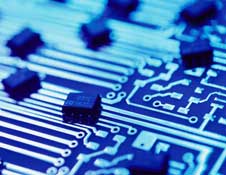
For example, Intel recently unveiled its first products based on a generation of 90-nanometer process technology, and its researches and engineers have built and tested prototype transistors all the way down to the 22-nanometer range. Currently, Intel scientists and engineers are working on identifying new materials such as carbon nanotubes and nanowires to replace current transistors, and in particular they hope to develop a “tri-gate” transistor approach that would enable chip designers to build transistors below the 22-nanometer range [4].
With the advent of nanotechnology, these transistors are becoming even faster and more powerful, and in accordance with the law of accelerating returns, the industry has been producing smaller transistors at lower costs with each and every passing year. As these semiconductors become smaller and smaller, they are quickly and surely pushing towards the limits of the nano-realm.
These innovations, however, do not come without their fair share of challenges. Physical issues that are not problematic at the micron scale arise at the nano-scale due to the emergence of quantum effects, and in much the same way that optical microscopy cannot be utilized at the nano-scale, the semiconductor industry is fast approaching a similar diffraction limit. Optical lithography, for instance, a process that uses the properties of light to etch transistors onto wafers of silicon, will soon reach its limit.
At its most basic level, nanotechnology involves pushing individual atoms together one by one. Since approximately 1.7 billion transistors are required for a single chip, this is obviously not a realistic method for mass production. Unless an alternative method for production or a solution to this problem is found, the development and manufacturing of transistors are expected to hit a proverbial brick wall by the year 2015. This is the reason that research in nanotechnology is so important for the world and future of semiconductors.
How are semiconductors manufactured?
Today’s semiconductors are usually composed of silicon, and they are manufactured in a procedure that combines the familiar with the bizarre; some steps that are involved in the process are as everyday as developing a roll of photographic film while others seem as if they would be better suited to take place on a spaceship.
These semiconductors appear to the naked eye as being small and flat, but they are actually three-dimensional “sandwiches” that are ten to twenty layers thick. It can take more than two dozen steps and up to two full months to produce a single one of these silicon sandwiches. Some of the basic and more essential steps involved in the manufacturing process of silicon chips are briefly detailed below.
First, silicon crystals are melted in a vat and purified to 99.9999% purity. The molten silicon is drawn into long, heavy, cylindrical ingots, which are then cut into thin slices called wafersabout the thickness of a business card.
One side of each wafer must be polished absolutely smooth. This process is called chemical-mechanical polishing, and it involves bathing the wafers in special abrasive chemicals. After chemical-mechanical polishing, imperfections cannot be detected on the wafers even with the aid of a laboratory microscope.
After a wafer is polished, layers of material must be stacked on top of the silicon wafer base. Insulating layers are laid down in alternation with conducting layers in a process called deposition. This is often achieved by spraying the chemicals directly onto the surface of the wafer through chemical vapor deposition. Following deposition, the wafer is coated with another layer of chemicals called a photoresist that is sensitive to light.
Next, a machine called a stepper (Figure 3.3) is calibrated to project an extremely fine and focused image through a special type of reticle film in a manner similar to that of a simple slide projector. The light that is transmitted through the reticle is projected onto the photoresist layer, which reacts to the light and begins to harden. All of the parts of the wafer exposed to this light harden into a tough crust while the parts in shadow remain soft. This particular step is known by the name of photoelectrochemical etching because it achieves an etching effect, resulting in a chip.
Figure 3.3.
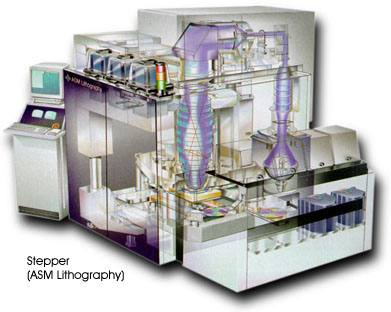
Hundreds of copies of the chip are etched onto the wafer until the entire surface has been exposed. Once this process is complete, the entire wafer is submerged into an etching bath, which washes away any parts of the photoresist that remain unexposed along with the insulating chemicals underneath. The hardened areas of the photoresist, however, remain and protect the layers of material underneath them. This process of depositing chemicals, coating with a photoresist, exposure to light over a film mask, and etching and washing away is repeated more than a dozen times. The result is an elaborate, three-dimensional construction of interlocking silicon wires.
This product is then coated with another insulating layer and is plated with a thin layer of metal, usually either aluminum or copper. Yet another photoresist is laid down on top of this metal plating, and after the wafer is exposed in a stepper, the process repeats with another layer of metal. After this step has been repeated several more times, a final wash step is performed, and a finished semiconductor product rolls off the assembly line, at last.
What is a clean room?
A typical semiconductor fabrication facility, or “fab” in industry jargon, looks like a normal two- or three-story office building from the outside, and most of the interior space is devoted to one or more “clean rooms,” in which the semiconductors are actually made. A clean room is designed with a fanatical attention to detail aimed towards keeping the room immaculate and dust-free (Figure 3.4).
Figure 3.4.
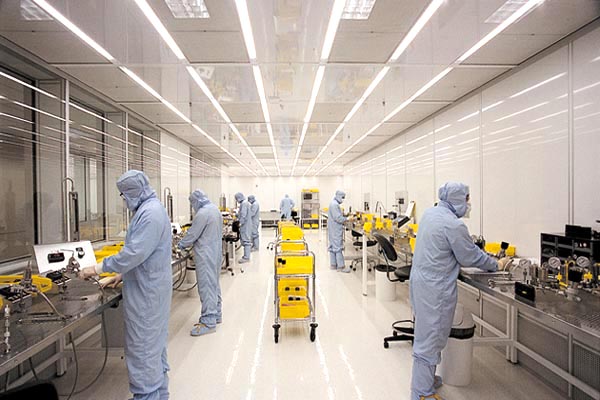
Most if not all surfaces inside these clean rooms are composed of stainless steel, and these surfaces are sloped whenever possible or perforated by grating to avoid giving dust a place to settle. The air is filtered through both the ceiling and the floor to remove particles that are down to 1/100 the width of a human hair. Lighting is characteristically bright and slightly yellowish to prevent mildew from forming behind equipment or in recessed corners, and even the workers in a clean room must be absolutely spotless.
Workers in these rooms must be covered from head to toe in “bunny suits” that completely seal the body in a bulky suit, helmet, battery pack, gloves, and boots. Once sealed in these suits, the workers often look more like space explorers in a science fiction movie than computer chip employees, but in order to even enter the stainless steel locker room to suit up to begin with, they must first pass through a series of air lock doors, stand under a number of “air showers” that actually blow dust off of clothing, and walk across a sticky floor matting that removes grime from the bottom of shoes.
Semiconductor-manufacturing companies often portray their fabrication facilities as being clean, environmentally friendly, and conspicuously free of the black, billowing smokestacks that have come to be associated with the plants and factories of other major industries. These facilities produce no visible pollution and certainly do not appear to pose any health or environmental risks.
In truth, the term “clean room,” itself is more than just a bit of an understatement. Industry executives often boast that their clean rooms are from 1,000 times to 10,000 times cleaner and more sanitary than any hospital operating room.
What are the health risks involved in the semiconductor industry?
The use of sterile techniques and the fastidious attention devoted to cleanliness in the semiconductor industry may perpetuate the illusion that the manufacturing of semiconductors is a safe and sterile process. However, as a rapidly growing body of evidence continues to suggest, hardly anything could be further from the truth (Figure 3.5). The question of worker safety and chemical contamination at chip-making plants has received an increasing amount of attention over the course of the past decade.
Figure 3.5.
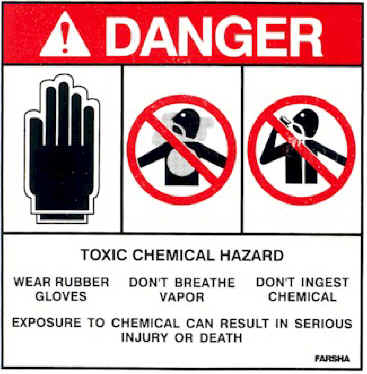
The devices being built at semiconductor fabrication facilities are super-sensitive to environmental contaminants. Because each chip takes dozens of trained personnel several weeks to complete, an enormous amount of time and effort is expended to produce a single wafer. The industry may pride itself on its perfectly immaculate laboratories and its bunny-suited workers, but it should be noted that the bunny suits are not designed to protect their wearers from hazardous materials but rather to protect the actual semiconductor products from coming into contact with dirt, hair, flakes of skin, and other contaminants that can be shed from human bodies. They protect the silicon wafers from the people, not the people from the chemicals.
Lee Neal, the head of safety, health, and environmental affairs for the Semiconductor Industry Association, has been quoted as saying, “This is an environment that is cleaner than an operating room at a hospital.” However, this boast is currently being challenged by industry workers, government scientists, and occupational-health experts across the country and worldwide.
Industrial hygiene has always been an issue in the semiconductor industry. Many of the chemicals involved in the manufacturing process of semiconductors are known human carcinogens or pose some other serious health risk if not contained properly. Table 3.1 lists ten of the hazardous chemicals most commonly used in manufacturing semiconductors along with their known effects on human health.
| Chemical name | Role in manufacturing process | Health problems linked to exposure |
| Acetone | Chemical-mechanical polishing of silicon wafers | Nose, throat, lung, and eye irritation, damage to the skin, confusion, unconsciousness, possible coma |
| Arsenic | Increases conductivity of semiconductor material | Nausea, delirium, vomiting, dyspepsia, diarrhea, decrease in erythrocyte and leukocyte production, abnormal heart rhythm, blood vessel damage, extensive tissue damage to nerves, stomach, intestine, and skin, known human carcinogen for lung cancer |
| Arsine | Chemical vapor deposition | Headache, malaise, weakness, vertigo, dyspnea, nausea, abdominal and back pain, jaundice, peripheral neuropathy, anemia |
| Benzene | Photoelectrochemical etching | Damage to bone marrow, anemia, excessive bleeding, immune system effects, increased chance of infection, reproductive effects, known human carcinogen for leukemia |
| Cadmium | Creates “holes” in silicon lattice to create effect of positive charge | Damage to lungs, renal dysfunction, immediate hepatic injury, bone defects, hypertension, reproductive toxicity, teratogenicity, known human carcinogen for lung and prostate cancer |
| Hydrochloric acid | Photoelectrochemical etching | Highly corrosive, severe eye and skin burns, conjunctivitis, dermatitis, respiratory irritation |
| Lead | Electroplated soldering | Damage to renal, reproductive, and immune systems, spontaneous abortion, premature birth, low birth weight, learning deficits in children, anemia, memory effects, dementia, decreased reaction time, decreased mental ability |
| Methyl chloroform | Washing | Headache, central nervous system depression, poor equilibrium, eye, nose, throat, and skin irritation, cardiac arrhythmia |
| Toluene | Chemical vapor deposition | Weakness, confusion, memory loss, nausea, permanent damage to brain, speech, vision, and hearing problems, loss of muscle control, poor balance, neurological problems and retardation of growth in children, suspected human carcinogen for lung and liver cancer |
| Trichloroethylene | Washing | Irritation of skin, eyes, and respiratory tract, dizziness, drowsiness, speech and hearing impairment, kidney disease, blood disorders, stroke, diabetes, suspected human carcinogen for renal cancer |
Several semiconductor manufacturers including National Semiconductor and IBM have been cited in the past for holes in their safety procedures and have been ordered to tighten their handling of carcinogenic and toxic materials.
In 1996, 117 former employees of IBM and the families of 11 workers who had died of cancer filed suit against the chemical manufacturers Eastman Kodak Company, Union Carbide Corporation, J. T. Baker, and KTI Chemicals, claiming that they had suffered adverse health effects as a result of exposure to hazardous chemicals on the job in the semiconductor industry [5]. The lawsuit was filed in New York, which prevented the employees from suing IBM directly. A separate group of former IBM workers who had developed cancer filed suit against the company in California, alleging that they had been exposed to unhealthy doses of carcinogenic chemicals over the past three decades. Witnesses who testified in depositions in the New York state court in Westchester County described how monitors that were supposed to warn workers of toxic leaks often did not function because of corrosion from acids and water. They also alleged that supervisors sometimes shut down monitors to maintain production rates. When they lodged complaints with senior officials in the company, they claim to have been told not to “make waves” [6]. Meanwhile, 70 female workers in Scotland sued National Semiconductor Corporation, another U.S.-based company, claiming that they, too, were exposed to carcinogens on the job.
These lawsuits and the resulting publicity prompted a groundbreaking study by the Health and Safety Executive, which commissioned a committee to investigate these allegations [7]. The committee found that there were indeed unusually high levels of breast and other kinds of cancer among workers at National Semiconductor’s fabrication facility in Greenock, Scotland. The committee concluded that the company had failed to ensure that the local exhaust ventilation systems adequately controlled the potential exposure of employees to hydrofluoric acid and sulphuric acid fumes and to arsenic dust. These findings proved to be extremely embarrassing for the company and for the industry. According to an official statement released by Ira Leighton, acting regional administrator of the New England branch of the U.S. Environmental Protection Agency, “National Semiconductor is a big business that uses a large amount of harmful chemicals and other materials. Our hazardous waste regulations were created to properly monitor dangerous chemicals and prevent spills. In order for it to work, it is important businesses to comply with all of the regulations. When companies fail to do this they are potentially putting people – their employees and neighbors – at risk [8]. ”
Moreover, a study of fifteen semiconductor manufacturers published in the December 1995 issue of the American Journal of Independent Medicine showed that women working in the so-called clean rooms of the semiconductor fabs suffered from a 14% miscarriage rate.
Figure 3.6.

The main problem in prosecution is that the industry does not have a single overarching and definitive process for manufacturing, and it is difficult to pinpoint one particular compound as causing a certain health problem because some plants use as many as 300 chemicals. Also, many of the manufacturing processes take place in closed systems, so exposure to harmful substances is often difficult to detect unless monitored on a daily basis.
Executives and spokespeople for the semiconductor industry maintain that any chip workers’ cancers and other medical problems are more likely due to factors unrelated to the job, such as family history, drinking, smoking, or eating habits. They also say that over the years, as awareness of chemical hazards has grown, they have made efforts to phase out toxic chemicals and to lower exposure to others. They insist that they use state-of-the-art process equipment and chemical transfer systems that limit or prevent physical exposure to chemicals and point out that the substances used in the semiconductor industry are used in other industries without a major health or safety problem.
What environmental risks are involved?
In theory, attention to cleanliness is in the manufacturer’s best interest not only from a health perspective but also from an economic. Many chemicals used in the production process are not expensive in and of themselves; however, the cost of maintaining these materials in an ultra-clean state can be quite high. This encourages the close monitoring of usage, the minimization of consumption, and the development of recycling and reprocessing techniques. Also, the rising costs of chemical disposal are prompting companies to conduct research into alternatives that use more environmentally friendly methods and materials. Individual companies and worldwide trade associations were active in reducing the use and emission of greenhouse gases during the 1990’s, and the industry as a whole has substantially reduced emissions over the last twenty years.
Nonetheless, there has been a history of environmental problems linked to the industry in Silicon Valley and other technology centers. To begin with, a tremendous amount of raw materials is invested in the manufacturing of semiconductors every year.
Moreover, a typical facility producing semiconductors on six-inch wafers reportedly uses not only 240,000 kilowatt hours of electricity but also over 2 million gallons of water every day [9]. Newer facilities that produce eight-inch and twelve-inch wafers consume even more, with some estimates going as high as five million gallons of water daily. While recycling and reusing of water does occur, extensive chemical treatment is required for remediation, and in dry or desert areas such as Albuquerque, New Mexico, home to plants for Motorola, Philips Semiconductor, Allied Signal and Signetics, Intel, and other high-tech firms, the high consumption of water necessary for the manufacturing of semiconductors can pose an especially significant drain on an already scarce natural resource [10]. The existence of economic mainstays including the mining industry and the established presences of Sandia National Laboratories and the Los Alamos National Laboratory make New Mexico an attractive location for high-tech tenants. However, the opening of fabrication facilities in the state leaves its farmers and ranchers in constant competition with the corporations for rights to water consumption. On average, the manufacturing of just 1/8-inch of a silicon wafer requires about 3,787 gallons of wastewater, not to mention 27 pounds of chemicals and 29 cubic feet of hazardous gases [11].
Figure 3.7.

Contamination has also been an issue in areas surrounding fabrication plants. Drinking water was found to be contaminated with trichloroethane and Freon, toxins commonly used in the semiconductor industry, in San Jose, California in 1981 [12]. These toxins were later suspected to be the cause of birth defects of many children in the area. The culprits were Fairchild Semiconductor and IBM. The companies’ underground storage tanks were found to have leaked tens of thousands of gallons of the toxic solvents into the ground. There are a number of semiconductor-related EPA cleanup sites in Silicon Valley, and there have been concerns raised about the cumulative air and groundwater pollution in Silicon Valley, as well.
Another area of concern is the eventual fate of discarded electronic systems such as computers, pagers, mobile phones, and televisions that contain semiconductor devices. Personal computers in particular are especially problematic because they become obsolete fairly rapidly and lose almost all of their market value within five or ten years after their date of manufacture. Tens of millions of PC’s are sold in the United States each year, and they pose an environmental risk not only through their sheer bulk in city dumps and landfills but also because their semiconducting devices often contain significant amounts of heavy metals, including lead and other potentially hazardous substances.
Why don’t we hear more about this on the news?
Across the United States, approximately 60% of the manufacturing facilities for semiconductor devices are located in six states. These states listed in descending order are California, Texas, Massachusetts, New York, Illinois, and Pennsylvania. The industry appears to be concentrated in these particular locations in part because they are near the primary users, transportation routes, and experts in the field, but people of all ages in all fifty states are impacted by semiconductor technology. Consumerism of semiconductor products is only expected to increase in coming years. Apple, for instance, expects to have sold 23.6 million iPods, devices that rely on semiconductor technology, by the year 2006.
If semiconductors are so ubiquitous in our day-to-day lives, why is there so little awareness about the serious environmental and health risks that are involved in their manufacturing process? Part of the problem is that little is known about the long-term health or environmental consequences of exposure to the chemicals that are used in the process. Because the semiconductor industry is still relatively new, not many studies have been conducted on this topic, and existing data is often inconclusive. This being said, some scientists predict that the cancer rate in the silicon chip industry will rise significantly in the future because cancer can take as long as 20-25 years to manifest itself in populations of exposed workers.
The EPA does have regulations in effect that are aimed toward the purpose of controlling the levels of contaminants released and minimizing human and environmental exposure to them. However, current regulations do not mandate that American companies report on offshore manufacturing. Therefore, even as media coverage and general awareness increase, companies can simply outsource more and more of their fabrication facilities to, for example, Southeast Asia. Some companies, in fact, have begun to do so, and there have even already been studies conducted on the health issues of workers in the electronics and semiconductor industries of Singapore and Malaysia [13].
Thus, changes in how and where semiconductor firms manufacture chips currently outstrip the present ability of the United States government and media institutions to track and monitor their potential threats to humans and the environment. If this situation is to change for the better in the near future, it is clear that radical reforms will need to take place on a number of different levels. However, the who, what, when, where, and why, so to speak, of that reform remains to be addressed.
Discussion questions
How many electronics products do you use on a day-to-day basis? How many of these products contain semiconductors?
Who do you think is ultimately responsible for initiating reform? The government? The corporation? The consumer?
Do you think that the health and environmental incidents related to semiconductor manufacturing will remain isolated incidents? Or do you think that these incidents will become epidemic in the future?
Do you think that nanotechnology will help the problem or make the problem worse?
Endnotes
M. Kazmierczak and J. James. Industry Data & Publications: U.S. High-Tech Exports, 2000-2004. 16 Nov. 2004. American Electronics Association. 17 Oct. 2005<http://www.aeanet.org/Publications/idjl_ushightechexports1204.asp>.
J. Turley, The Essential Guide to Semiconductors. Upper Saddle River, New Jersey: Prentice Hall Professional Technical Reference, 2003.
J. Turley, The Essential Guide to Semiconductors. Upper Saddle River, New Jersey: Prentice Hall Professional Technical Reference, 2003. From Prentice Hall
IBM Research Nanotechnology Homepage. IBM. 16 Oct. 2005 <http://domino.research.ibm.com/comm/research.nsf/pages/r.nanotech.html>.
R. Chepesiuk, “Where the Chips Fall: Environmental Health in the Semiconductor Industry.” Environmental Health Perspectives 107 (1999): 452-457.
Richards, “Industry Challenge: Computer-Chip Plants Aren’t as Safe And Clean As Billed, Some Say – Women at Scottish Factory Tell of Spills and Fumes, Face Host of Medical Ills – Firms Won’t Help Do a Study.” Wall Street Journal 5 Oct. 1998, eastern ed.: A1.
A. Heavens, Chip Plants Take Heat For Toxics. 14 Jan. 2003. Wired News. 13 Oct. 2005, <http://www.wired.com/news/technology/0,1282,57191,00.html>
M. Merchant, Maine Semiconductor Plant Fined For Hazardous Waste Violations. Boston: U.S. Environmental Protection Agency, Press Office, 2001.
P. Dunn, Cleanliness Outside, Some Issues Outside. 2 Oct. 2000. The Foundation for American Communications. 13 Oct. 2005 <http://www.facsnet.org/tools/sci_tech/tech/community/environ2.php3>
J. Mazurek, Making Microchips: Policy, Globalization, and Economic Restructuring in the Semiconductor Industry. Cambridge, Massachusetts: MIT Press, 1999.
C. Hayhurst, “Toxic Technology: Electronics and the Silicon Valley.” E: the Environmental Magazine May-Jun. 1997: 4.
B. Pimentel, “The Valley’s Toxic History.” San Francisco Chronicle 30 Jan. 2004, final ed.: B1.
V. Lin, Health, Women’s Work, and Industrialization: Semiconductor Workers in Singapore and Malaysia. New York: Garland Publishing, Inc., 1991.
3.2. Patent or Perish*
Note
"This module was developed as part of a Rice University Class called "Nanotechnology: Content and Context" initially funded by the National Science Foundation under Grant No. EEC-0407237. It was conceived, researched, written and edited by students in the Fall 2005 version of the class, and reviewed by participating professors."
Introduction
Nanotechnology is one of the newest and fastest growing scientific fields in today's world. As many new ideas and applications come along, there is an overwhelming need for numerous patents. Since nanotechnology poses such great potential for technological advancement and therefore tremendous financial gains, patents in this field become especially important. A patent is defined as a public document that demonstrates the use of a new product or process and that consequently gives the patentee exclusive rights to the development and profit of his or her invention.[1]
The three basic types of patents are:
Utility Patents: A patent for the function of an invention. For example, a patent on a mousetrap.
Design Patents: A patent for the non-functional characteristics of an invention. For example, a patent on a specific design of jewlery.
Plant Patents: A patent for an asexually reproducible plant.[2]
Additionally, there are four basic requirements for patent law. First, it must be a novel idea. Next, it must be a non-obvious idea. Thirdly, the patent must have a practical purpose or a marketable application. And last, the patent must be described in such a way that it can be interpreted and used by a person skilled in the particular field (i.e. nanotechnology).[3]
To protect the inventor, the patent systems in the United States and other countries allow the patentee to take action against infringers through civil lawsuits. The definition of infringement in the United States is defined in the case of Wolverine World Wide, Inc. v. Nike, Inc.:
"[F]or a court to find infringement, the plaintiff must show the presence of every element or its substantial equivalent in the accused device."[4]
Why are Patents Important?
The United States has a patenting system to allow inventors, ranging from corporations to universities, to get a guarantee of a return on their investment for their research. Without this, capitalism, the driving force of our entire country, could not flourish because inventors would not be able to secure their ability to profit from their invention. For example, in the case of a pharmaceutical company, investors will put in billions of dollars into research for new drugs over a long period of time (often a decade or more). They are willing to do this on the assumption that they can obtain a patent which will allow them to obtain revenues as the sole distributor of that product. In addition, patents are also important tools for university researchers and their institution to receive prestige and recognition. For example, Dr. Richard Smalley, a professor at Rice University in the chemistry department, obtained patent number 5227038 for his discovery of the fullerene- more commonly known as the Buckyball- a third form of carbon.[5] First, with this patent, Dr. Smalley and Rice University became known world wide. This recognition included a Nobel Prize for Smalley as well as large government contracts and grants for the school. Second, with this patent, future possibilities of earnings-via royalties-were opened up for the school and thus leads to further research.
Criticism of the Patent System
The major criticism of the patent system lies in the apparent creation of a monopoly. When an inventor is granted exclusive economic control of his invention, competition is hindered. As a result, this stifles capitalism and also provides an expensive but lower quality product.[6]
Secondly, a concept known as the "tragedy of the anticommons" presents a deeper problem in patenting. This theory was established by Michael Heller and Rebecca Eisenberg in a 1998 publication of "Science."[7] In essence, their paper stated that innovations to patented inventions would be hindered due to the additional costs of respecting royalties from the original patent. As a result, the societal benefits due to innovations of current products would be inhibited.[8]
Figure 3.8.

History of Patents: From Ancient Greece to Nanotechnology
"Before [the adoption of the United States Constitution], any man might instantly use what another had invented; so that the inventor had no special advantage from his own invention. The patent system changed this; secured to the inventor, for a limited time, the exclusive use of his invention; and thereby added the fuel of interest to the fire of genius, in the discovery and production of new and useful things."-Abraham Lincoln, Second lecture on discoveries and inventions, February 11, 1859
Patenting has a very lengthy history; this tradition began in a rudimentary form in ancient Greek cities. However, it was not until 15th century Venice that patents in today's sense were issued. This Venetian law was defined as the Venetian Statute of 1474 and called for an invention's "legal protection against potential infringers."[9] Over time, patenting evolved throughout Europe. In the United Kingdom, for example, the King or Queen was given the executive power to issue "letters patent" that awarded certain people monopolies over specific goods or services. Then, in 1790, a revolutionary breakthrough in the patenting process occurred when the United States established the Patent Commission of the U.S. The first patent (Figure 1) was awarded by this commission in this same year. [11] The most important facet of this patent system was that it recognized by law that an inventor had an "intrinsic" right to make money off of his or her discovery. Previously, this right was not intrinsic but rather individually given by a monarchal power.[12] Our founding fathers created this specific system to allow capitalism, the backbone of America, to flourish. This important distinction in the United States patent system is depicted in Article I, Section 8 of the Constitution:
"Congress shall have the power...to promote the progress of science and useful arts by securing for limited times to authors and inventors the exclusive right to their respective writings and discoveries."
Over time, after several amendments to the original Patent Commission, the United States Patent Office was officially created in 1802. From this point, hundreds of thousands of patents were given out over the course of the next two centuries.[13]
Figure 3.9.

Additionally, a second patenting breakthrough occurred in the United States after World War II. Vannevar Bush, a leading government researcher, realized the importance of government funded research for national defense. Expanding on this idea, Bush recognized that university research could also be used in non-war time to enhance the economy, through the transfer of knowledge from basic science to industrial production. Consequently, he believed that the government should fund these university projects. This belief was put into practice by the foundation of the National Science Foundation and other similar organizations. Nevertheless, up until the 1960's, there was limited success in the transfer of basic research discoveries into economic results due to patenting problems. Because of the inconsistencies in the policies and practices of government agencies, very little of the discoveries made in basic scientific research were transferred to the private sector. Statistically, in 1980, out of the 28,000 patents titled by the federal government, less than 5% were directed towards commercial products that would benefit the public directly. [15]
In 1980, the United States government, in order to solve this problem, decided that a policy was needed which allowed universities to obtain ownership over certain inventions (direct involvement in commercialization). As a result, this policy would theoretically stimulate the United State's economy due to an influx in the licensing and commercialization of new inventions. This policy was officially implemented as the Bayh-Dole Act, which allowed and, to an extent, encouraged colleges and universities to begin developing and strengthening the research needed to proceed in the patenting of useful inventions.[16]
Figure 3.10.

Prior to the decision of passing this act, there was considerable debate about this issue. Many feared that such a policy of exclusive licenses would lead to monopolies and higher prices. Furthermore, people saw problems in areas ranging from foreign industries getting too much benefit from the act to whether the act fostered anti-competitiveness. However, this drastic concern for the act led to increased debate and modifications that strengthened the future benefit of the measure.[17]
Ultimately, it can be concluded that the Bayh-Dole act drastically increased the transfer of technology from research into industry. Today, the positive effect of the Bayh-Dole act is evident in the miraculous advances in the medical, engineering, chemical, and computing fields. Hence, the Bayh-Dole act is an integral part of nationally funded scientific research. Today, there exist more than 5 million patents given by the United States Patent and Trademark Office. [18]
Patents and the World
In an increasingly globalized and economically interconnected world, the importance of patents across borders has become an important issue in recent years. Patents and patent law often come into dispute on the international level for two main reasons. Most countries have some form of patent laws and agencies but all differ, some drastically, in how they define a patent, what it can be filed for, and the degree that other countries' patents are accepted. Hence, the first main issue of this dispute comes from whether a patent made in one country is viable in another. The second issue arises when one country's laws and dealings come into conflict with another; a problem that requires international mediation.
Figure 3.11.
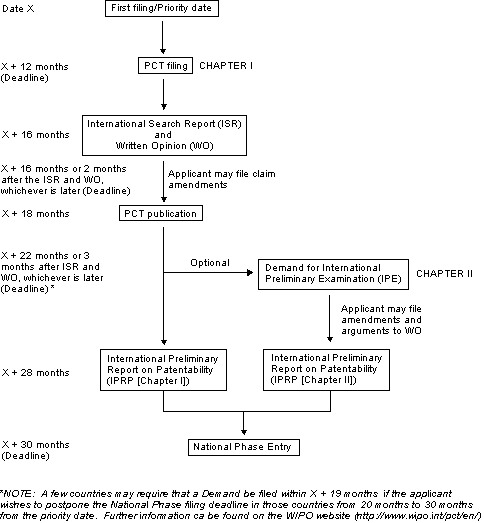
When one gets a patent they would usually have to apply and obey procedures (and pay the fees) required by each of the countries' patent laws. Due to the difficulty of applying for patents in dozens of countries, many treaties have been created to make the process more feasible. The first such recorded treaty came out of the Paris Convention of 1883, which simply established that all the countries that were part of the Paris Convention would accept the filing date of a patent originating in any one country. However, this still left the problem of going through the procedures of each country. The Patent Cooperation Treaty (PCT) attempted to streamline various national procedures into a single national application process (Figure 4) through the World International Property Organization (WIPO).[20] This system has eased this first issue substantially, though there is still a great deal of asymmetry in countries' patent law.
The second problem creates even more contention. How does the international community enforce patent rights and laws? What ‘body' should deal with mediating disputes? Should one country be able to affect another country's patent laws? How? Major international disputes have put these questions into sharp focus. For example, a recent patent bill proposed in India would prevent the production of generic (cheaper copies of brand name products) alternatives to larger company drugs. This would pose a large problem for many African countries because the bill would prevent Indian firms from selling anti-viral drugs. These integral drugs would be used to fight the AIDS virus, which continues to be a rampant problem in this area of the world. The new patent would drastically increase prices and therefore affect the treatment of millions of people infected with HIV in Africa.[22] Should African countries have a say in Indian patent law? What kind of judicial body should deal with the dispute? The Hague Conference on Private International suggested judicial solutions, but none have yet to be satisfactorily initiated.
Ultimately, international relations and patents now rest in any uneasy partnership of treaties that deal with increasing numbers of international patenting.
Figure 3.12.

Are Ideas Patentable?
Figure 3.13.

The constitution states that "inventions" can be patented to protect the inventor's right to make a profit over his or her discovery. Mere ideas that do not have any concrete commercial function cannot be patented. However, in modern science, including the field of nanotechnology, the line between an invention and an idea has become blurred. For example, in the field of genetic research, certain genes have been patented by researchers. In some cases, researchers have identified both the sequence and the specific function of a gene, which they are trying to patent. However, if a researcher merely discovers a novel gene without knowing the possible commercial uses of it, will the gene still be patentable? It is relatively easy to discover a multitude of novel genes; however it is quite difficult to establish a commercial use for it. Hence, this issue is highly controversial and parallels the problems in the "patentability of ideas." An idea, like a gene, is very easy to create. While some researchers can supplant an idea with a concrete commercial purpose in today's world, others simply "discover" the idea. To come up with an idea, just like identifying a gene, is relatively easy, whereas to define a tangible function for the idea/gene is considerably difficult. For example, any average Joe can create an idea for a futuristic hover car but it would take a large research team and a couple "Albert Einsteins" to make one. Thus, where can we draw the line when it comes to this issue? Are all genes patentable even if a researcher can not demonstrate its use? Similarly, are all ideas patentable even if an inventor can not physically demonstrate its use? Will the patenting of ideas and genes monetarily hinder research that will help establish their specific commercial function?[24] All of these questions demonstrate the inherent problems between modern scientific research and patents.[25] This crisis must be sorted out for research to truly continue. As a result, the United States government and the USPTO are still trying to work with scientists and researchers to resolve this problem in the case of genetic research. Currently, this problem, however, has yet to be solved and there is still great deliberation about this in both the scientific community and the government.[26]
Figure 3.14.
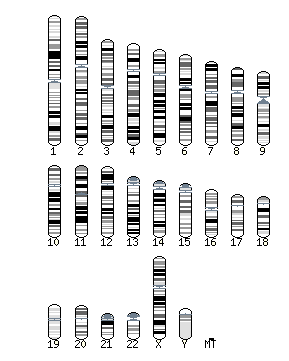
Furthermore, if the government allows a researcher to scan the human genome (easy process) and hypothetically patent hundreds of vital genes, then, similarly, one can argue that hundreds of feasible ideas can be patented even if their commercial function is not physically defined. If this is possible, then what does patenting an idea entail? Will the patentee get royalties every time someone researches a way to convert their idea into a usable product? Or will it go so far as a patentee will collect royalties every time someone merely thinks about their idea? Obviously, a fine line must be drawn by the USPTO in order to prevent this scenario from getting out of hand. Hence, due to the hypothetical nature of modern scientific research in genetics and nanotechnology, this "fine line" is necessary for an orderly and efficient transfer of technology from research to commercial products. Ultimately, as soon as this feat is accomplished, society will benefit as a whole.
Nanotechnology and Patenting
Because of its place on the frontier of modern scientific research, nanotechnology is a field that is and will be constantly affected by the patenting system of both the United States and the world. First, due to the wide variety of applications of nanotechnology, both corporations and universities are becoming more and more involved with this field. As a result, the capitalism of nanotech corporations is protected by the patent system, while patents from government-funded research by universities are protected by the Bayh-Dole Act of 1980. Hence the core of nanotech research is intertwined with the United States patent system. In addition, due to the nature of nanotechnology (and genetic research-see "Are Ideas Patentable?"), considerable research is done on hypothetical applications that, at the present time, have no physical commercial function. As a result, the "patentability of ideas" is an important issue in nanotechnology. Thus the USPTO's ability to resolve this issue is integral to modern research in this field.
Further complications in patenting nanotech inventions result from the nature of the technology. Some of these problems have been resolved. First, the USPTO has established official guidelines for simply defining the field (See "Useful Links"). Second, three basic areas for nanotech patenting have been defined as well. Ultimately, as in genetic engineering, the USPTO and other international patenting offices must adjust and adapt to the onset of a new type of modern scientific research in the field of nanotechnology.
Discussion Questions
Explain how a patent system in one country can greatly affect other countries around the world. How do you think this problem should be solved? Can it be?
Analyze the relationship between the patentability of genes and the patentability of the ideas. What are the similarities? What are the differences?
If you were a senator, how would you vote in a decision on patenting genes? Would you be for or against it? Why?
How did the Bayh-Dole Act allow Dr. Smalley to patent his discovery of the Buckyball? What would have happened if he discovered it prior to 1980?
References
[1] Wikipedia, "Patent." http://en.wikipedia.org/wiki/Patent
[2] Dean A. Craine, "Types of Patent Applications., Patents, <http://www.nwpatents.com/fti04.html>
[3] Steven Crespi, "Patenting for the research scientist: an update, Biotechnology, Volume 22, Issue 12 , December 2004, Pages 638-642<http://www.sciencedirect.com/>
[4] Wikipedia, "Patent Infringment," <http://en.wikipedia.org/wiki/Patent_infringement>:
[5] USPTO. <http://www.uspto.gov/>
[6] Ibid., Wikipedia, "Patent."
[7] Michael A. Heller and Rebecca S. Eisenberg, "Can Patents Deter Innovation? The Anticommons in Biomedical Research,"Science, Vol 280, Issue 5364, 698-701 , 1 May 1998 <http://www.sciencemag.org/cgi/content/full/280/5364/698>
[8] Ibid., Wikipedia, "Patent."
[9] Ibid., Wikipedia, "Patent."
[10] Ibid., USPTO.
[11] Ibid., Wikipedia, "Patent."
[12] Ideafinder, "Patent Information." <http://www.ideafinder.com/resource/features/rpp-tn.htm>
[13] Ibid., Ideafinder.
[14] Ibid., Wikipedia, "Patent."
[15] Univ. of California Office of the President, "The Bayh-Dole Act." <http://www.ucop.edu/ott/bayh.html#Results>
[16] Ibid., UCOP.
[17] Ibid., UCOP.
[18] Ibid., UCOP.
[19] Wikipedia, "Vannevar Bush," <http://en.wikipedia.org/wiki/Vannevar_Bush>
[20] Michael Caine, "Why and how the PCT is used--Advantages and Problems," Intellectual Federation of Intellectual Property Attorneys. <www.ficpi.org/library/NICE/caine.doc>
[21] Canadian Bacterial Disease Network, "Patents: an Overview." <http://www.cbdn.ca/english/ip_primer/Web/PatentsPCT.html>
[22]Marta Sender, "Availability of cheap HIV-AIDS drugs threatened by Indian Patent Law." <http://www.news-medical.net/?id+8591> 21 March 2005
[23] Schwartlander et al., Science, 2000, 289:6423Univ. of Maryland School of Pharmacy, "HIV Figures," <http://www.pharmacy.umaryland.edu/courses/PHAR531/lectures_old/fig/hiv_fig_all.html>
[24] Oak Ridge National Laboratory, "Genetics and Patenting," <http://www.ornl.gov/sci/techresources/Human_Genome/elsi/patents.shtml>
[25] See also "Criticism of the Patent System" and the "tragedy of the anticommons."
[26] Ibid., ORNL.
[27] Ensembl, "Human (Homo Sapiens)," <http://www.ensembl.org/Homo_sapiens/index.html>